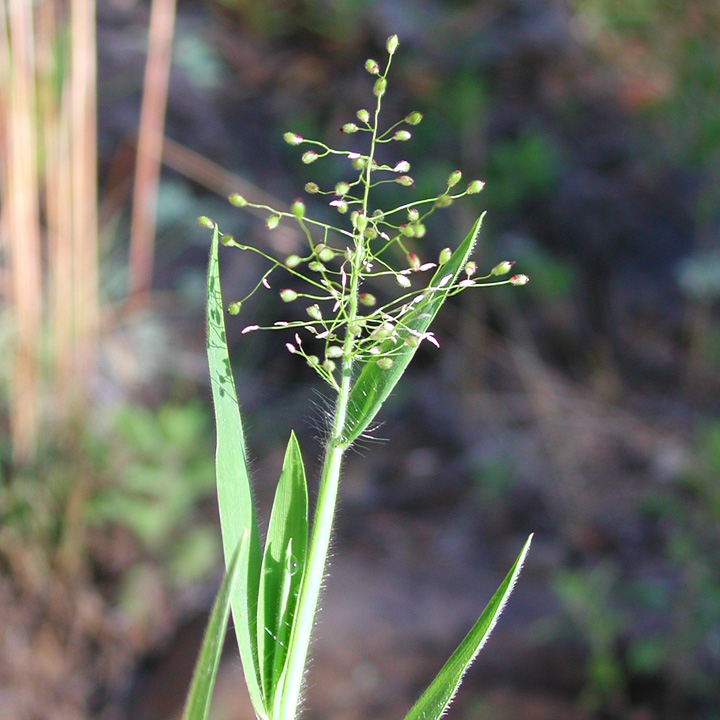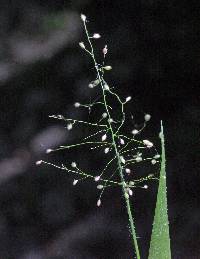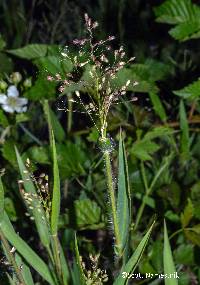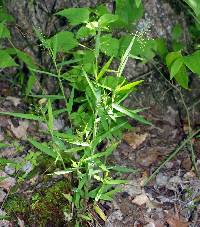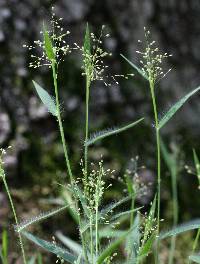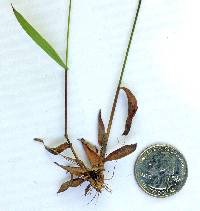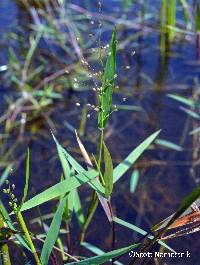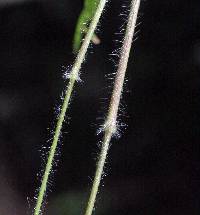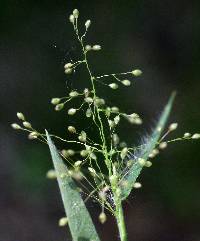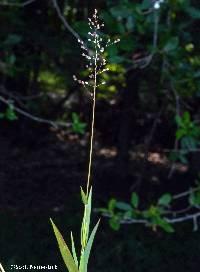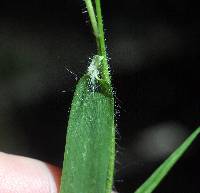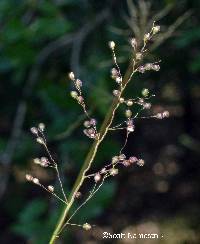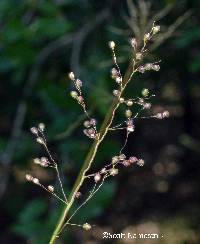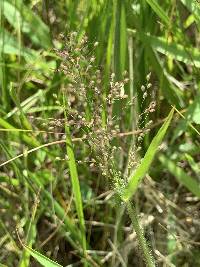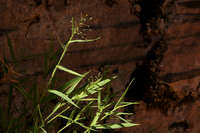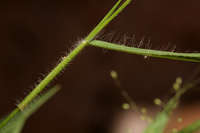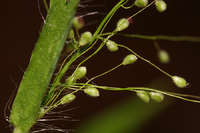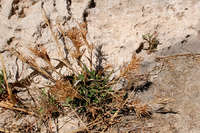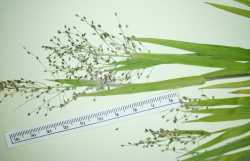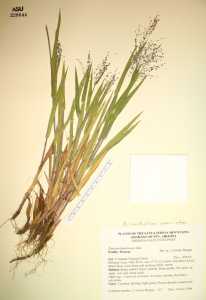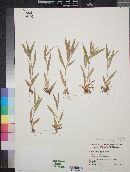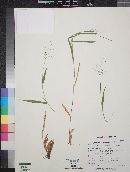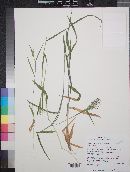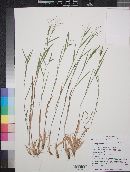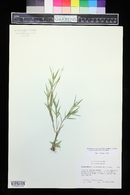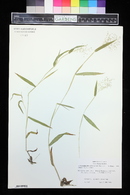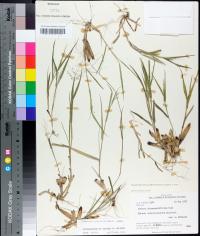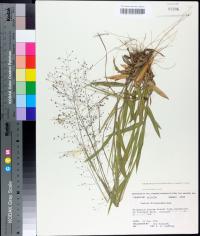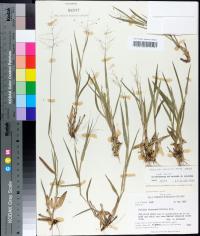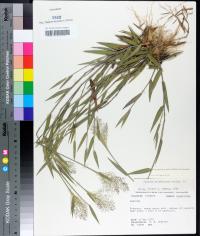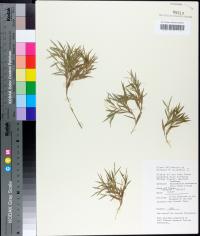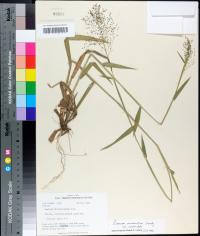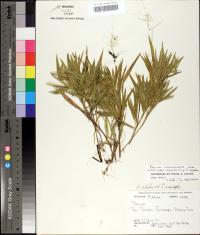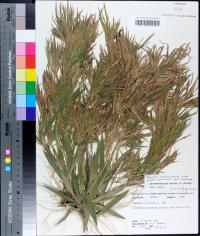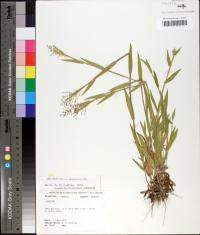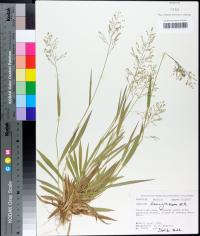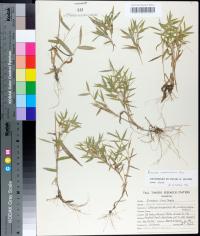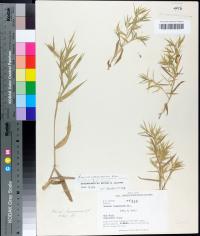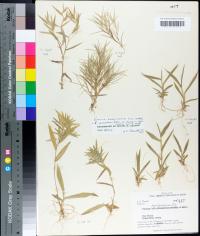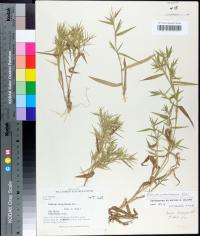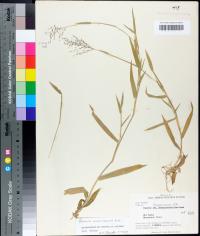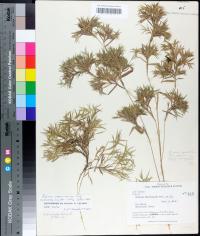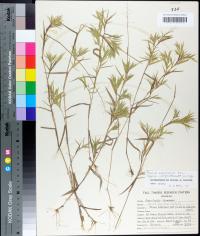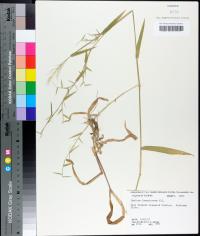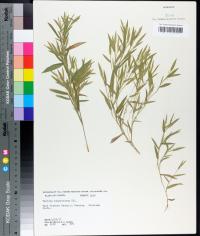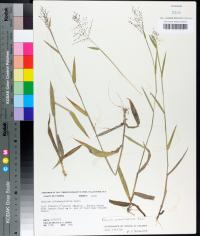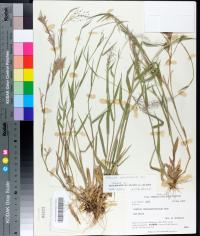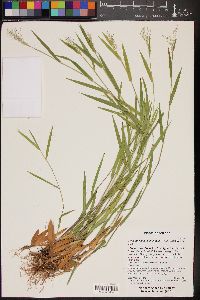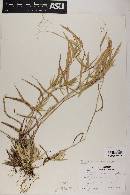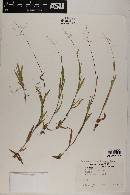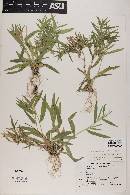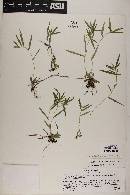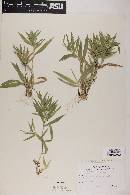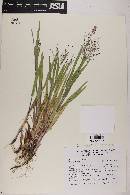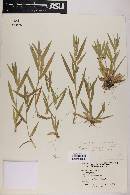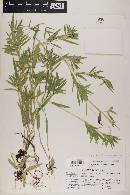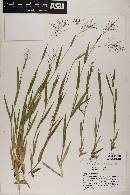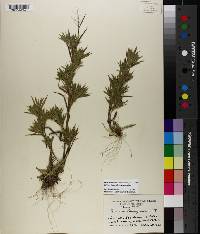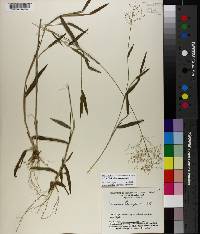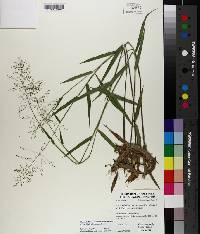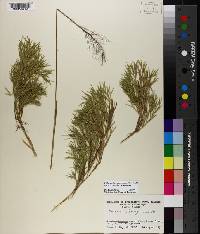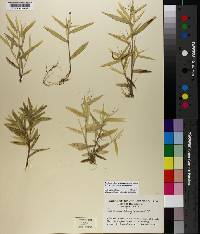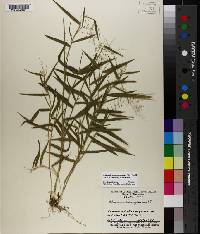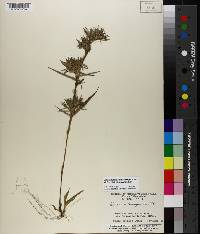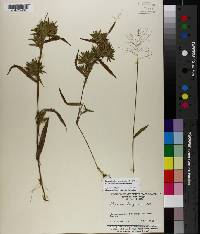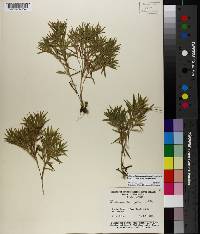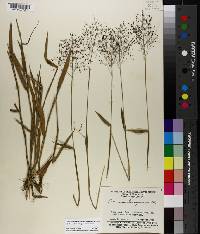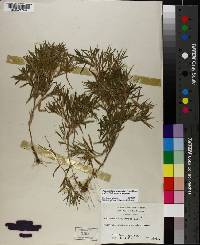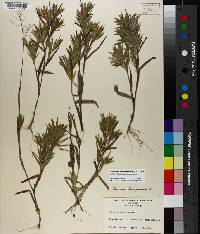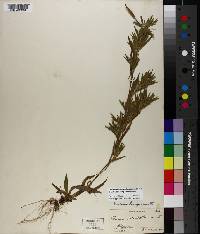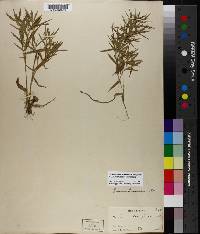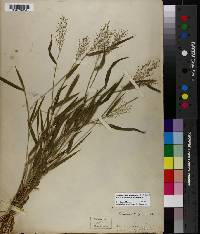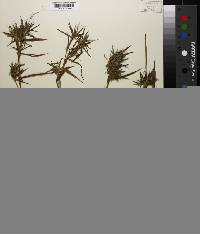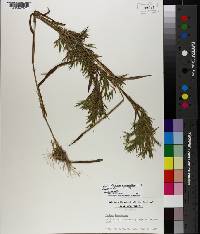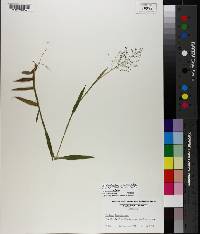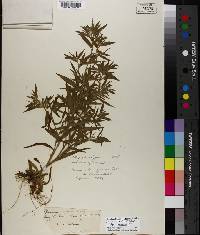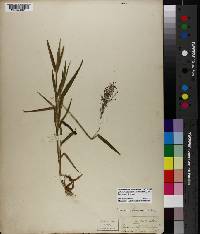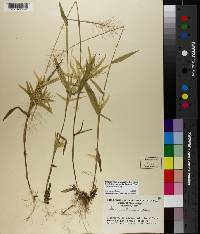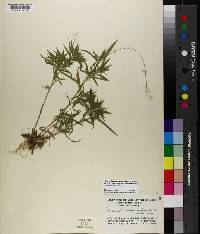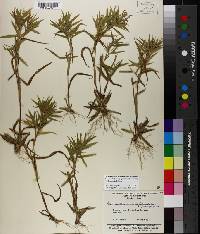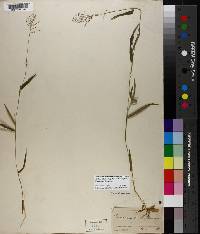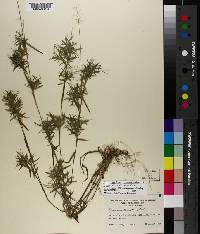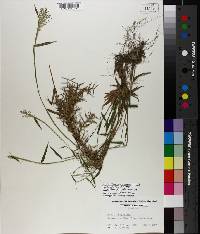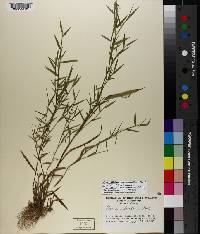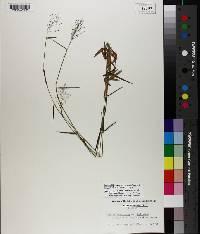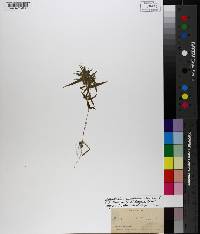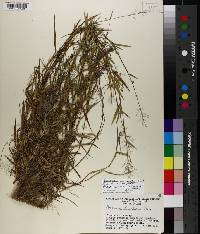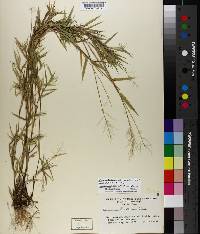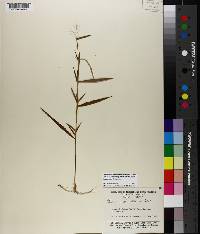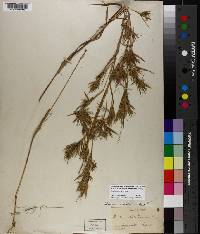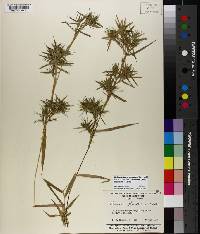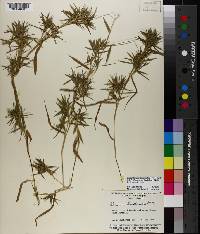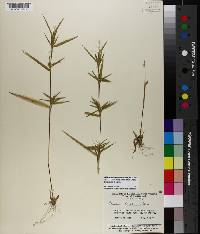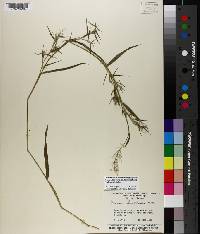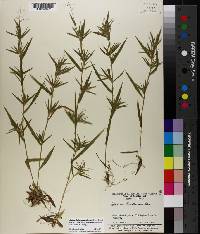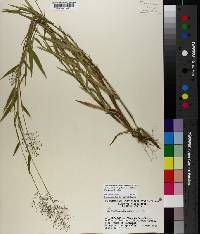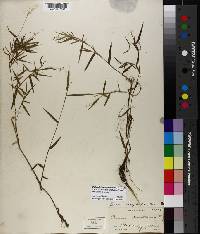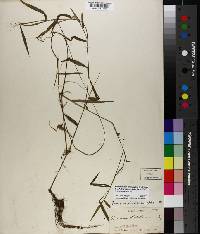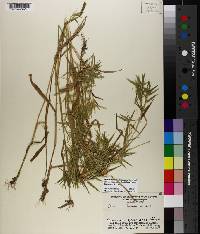
|
|
|
|
Family: Poaceae
Tapered Witch Grass, more...hotsprings panicum, hotsprings rosette grass, tapered rosette grass, Hairy Panicgrass, Panic Laineux
|
Plants more or less densely cespitose. Basal rosettes usually well-differentiated; blades ovate to lanceolate. Culms 15-100 cm (rarely taller), usually thicker than 1 mm, weak and wiry or relatively stout and rigid, erect, ascending or decumbent; nodes occasionally swollen, glabrous or densely pubescent, often with a glabrous or viscid ring below; internodes purplish or olive green or grayish-green, to yellowish-green, variously pubescent, with hairs of 2 lengths or glabrous; fall phase erect, spreading, or decumbent, usually branching extensively at all but the uppermost nodes, ultimately forming dense fascicles of branchlets with reduced, flat or involute blades and reduced secondary panicles with few spikelets. Cauline leaves 4-7; sheaths usually shorter than the internodes, glabrous or densely and variously pubescent with hairs shorter than 3 mm, margins ciliate or glabrous; ligules and pseudoligules 1-5 mm, of hairs; blades 2-12 cm long (rarely longer), 2-12 mm wide (rarely wider), firm or lax, spreading to reflexed or stiffly ascending, yellowish-green or grayish-green to olivaceous, densely to sparsely and variously pubescent, margins similar or occasionally whitish-scabridulous, margins often with papillose-based cilia, at least basally, bases rounded or subcordate. Primary panicles 3-12 cm, 1/4-3/4 as wide as long, usually open, well-exserted, rather dense; rachises glabrous, puberulent, or more or less densely pilose, at least basally. Spikelets 1.1-2.1 mm, obovoid to ellipsoid, yellowish-green to olivaceous or purplish, variously pubescent, obtuse or subacute. Lower glumes usually 1/4-1/2 as long as the spikelets, obtuse to acute; upper glumes and lower lemmas subequal, equaling the upper florets at maturity, or occasionally the upper glumes slightly shorter, not strongly veined; lower florets sterile; upper florets 1.1-1.7 mm long, 0.6-1 mm wide, ellipsoid, obtuse to acute or minutely umbonate or apiculate. 2n = 18. Dichanthelium acuminatum is common and ubiquitous in dry to wet, open, sandy or clayey woods, clearings, bogs, and swamps, or in saline soil near hot springs, growing in much of the Flora region and extending into northern South America. It is probably the most polymorphic and troublesome species in the genus. The treatment presented here attempts to delimit the major variants present, but does not fully reflect the intricate reticulate pattern of morphological variation that exists. There is considerable overlap among the nine subspecies recognized and, in addition, there appears to be widespread introgression from other Dichanthelium species, such as D. dichotomum, D. sphaerocarpon, D. ovale, and D. aciculare into the D. acuminatum complex, contributing to the taxonomic difficulties. FNA 2003 Common Name: tapered rosette grass, hairy panicgrass Duration: Perennial Nativity: Native Lifeform: Graminoid General: Olive green grayish tufted perennial with well-differentiated basal rosette, stems 15-100 cm, thicker than 1 mm, ascending to decumbent, with occasionally swollen nodes, densely villous throughout. Vegetative: Blades 6-12 cm long, to 10 mm wide, ascending to often spreading and slightly incurved, softly pubescent on both surfaces, with papillose based cilia for most of the length; ligules 1-5 mm of hairs; cauline sheaths densely soft spreading villous. Inflorescence: Primary panicle well exserted, on peduncles longer than 8 cm, 3-12 cm usually quarter to three quarters wide as long, open, dense; spikelets 1.5-2 mm, broadly ellipsoid or obovoid, yellowish green to olive and purple; lower glumes quarter to half as long as spikelets, obtuse to acute; glumes subequal, equaling upper florets at maturity, upper florets ellipsoid, obtuse to acute or minute apiculate. Ecology: Found in dry to wet soils, sandy to clayey substrates from 2,500-6,500 ft (762-1981 m); flowers June-October. Notes: Our is probably ssp. acuminatum. This description is a blend of the type description for D. acuminatum and the subspecies description. If uncertain about the subspecies differentiation, collect this species. FNA considers this the most polymorphic and troublesome species in the genus. Ethnobotany: Unknown Etymology: Dichanthelium is from Greek dicha for bifid, and stemma a garland or crown, referring to the forked stamens, while acuminatum means having along tapering point. Synonyms: Many, see Tropicos Editor: SBuckley, 2010 |
|
|
|

